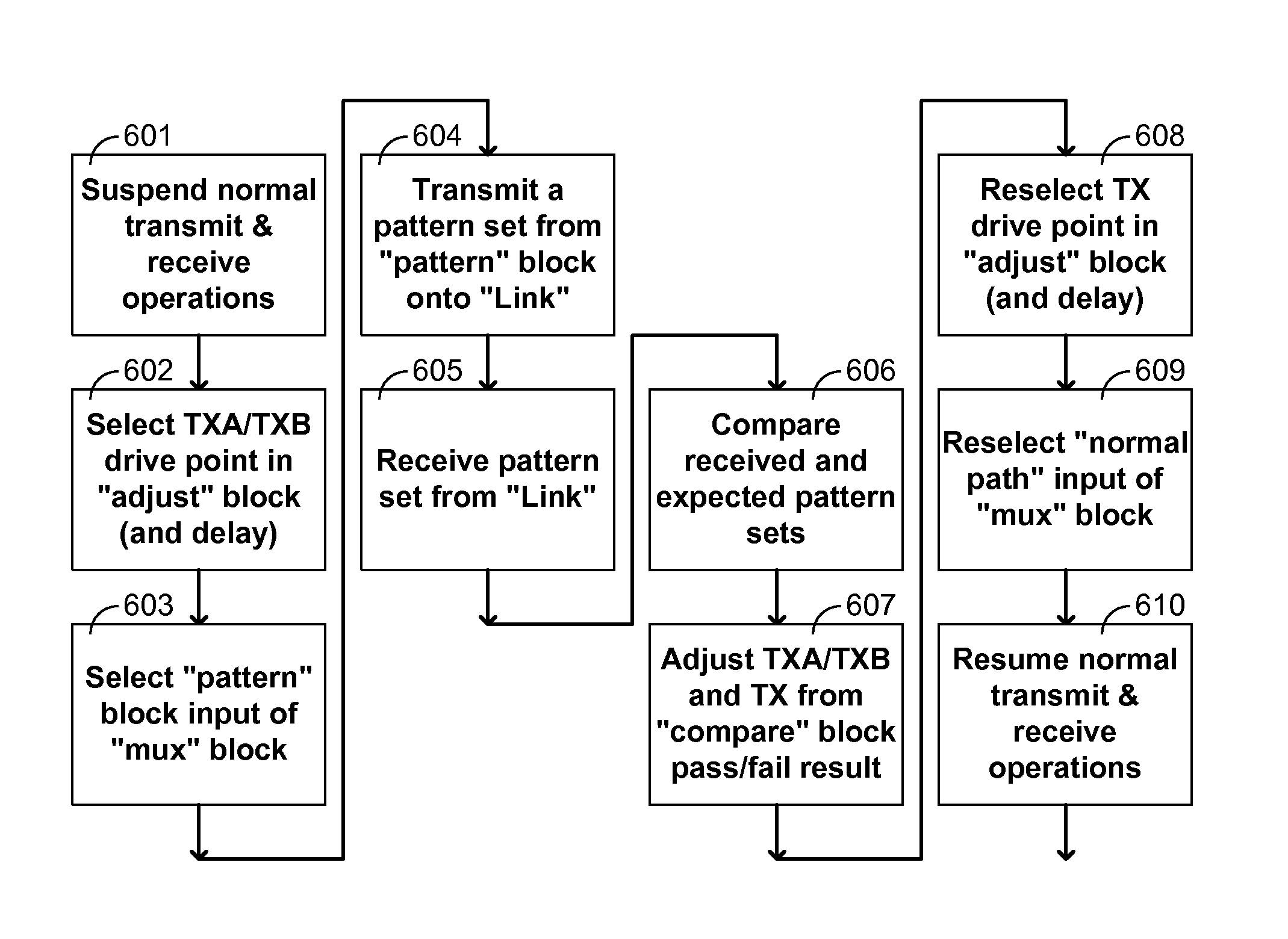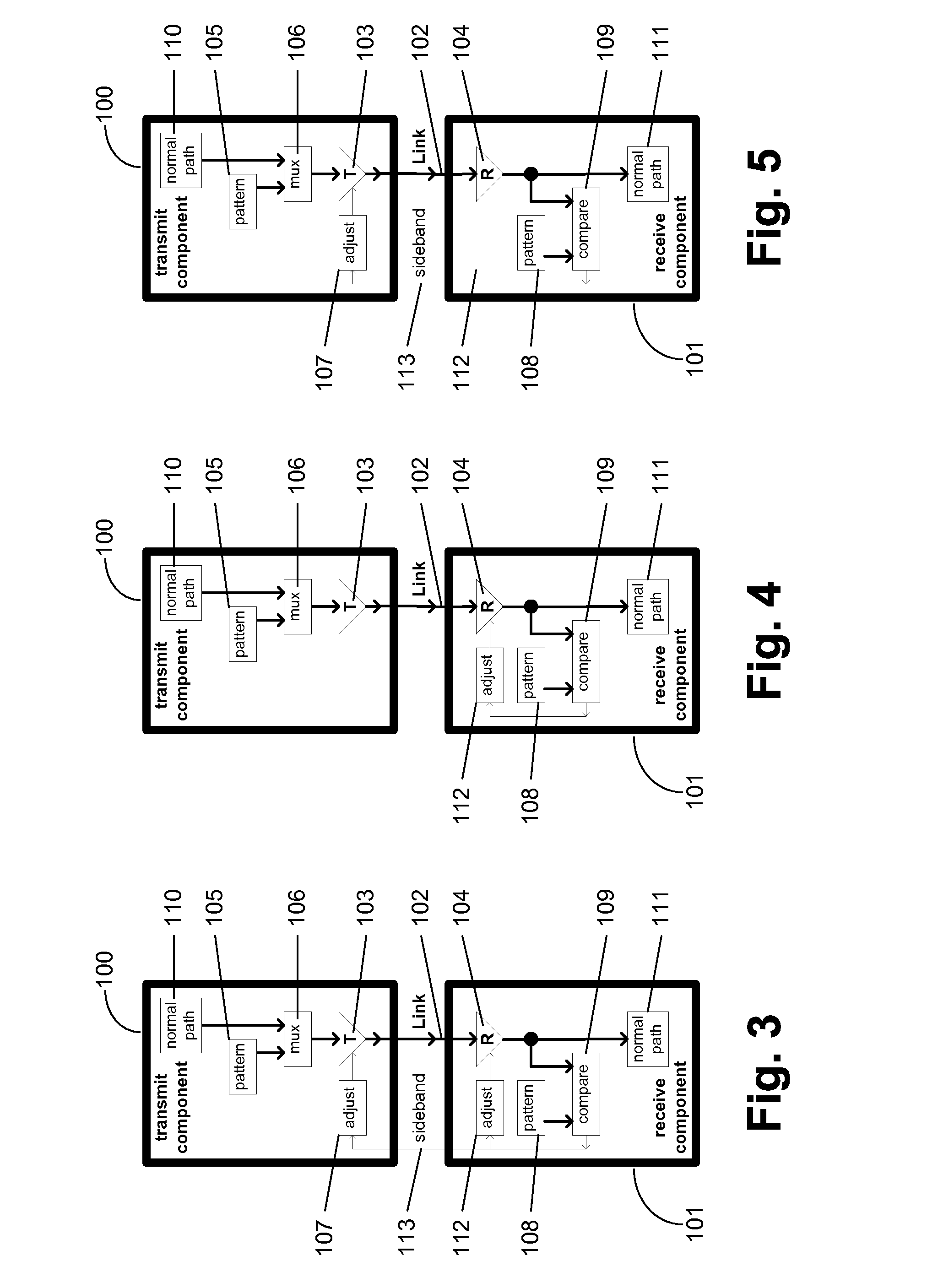Communication channel calibration for drift conditions
a communication channel and drift condition technology, applied in the field of calibration of communication channel parameters, can solve the problems of system conditions changing and clock frequency drift, and achieve the effects of improving reliability, improving utilization of memory at the second component, and increasing the operating frequency of the channel
- Summary
- Abstract
- Description
- Claims
- Application Information
AI Technical Summary
Benefits of technology
Problems solved by technology
Method used
Image
Examples
Embodiment Construction
[0058]A detailed description of embodiments of the present invention is provided with reference to the Figures.
Transmitter and Receiver Timing Parameters
[0059]FIG. 1 shows two components 10, 11 connected with an interconnection medium, referred to as Link 12. One has a transmitter circuit 13 which drives symbols (bits) on Link 12 in response to rising-edge timing events on the internal CLKT signal 14. This series of bits forms signal DATAT. The other has a receiver circuit 15 which samples symbols (bits) on Link 12 in response to rising-edge timing events on the internal CLKR signal 16. This series of bits forms signal DATAR. FIG. 2 illustrates the timing parameters, including the transmit clock CLKT signal 14 on trace 20, the transmitter signal DATAT on trace 21, the receive clock CLKR signal 16 on trace 22, and the receiver signal DATAR on trace 23. The transmitter eye 24 and the receiver eye 25 are also illustrated. The transmitter eye 24 is a window during which the signal DATAT...
PUM
 Login to View More
Login to View More Abstract
Description
Claims
Application Information
 Login to View More
Login to View More - R&D
- Intellectual Property
- Life Sciences
- Materials
- Tech Scout
- Unparalleled Data Quality
- Higher Quality Content
- 60% Fewer Hallucinations
Browse by: Latest US Patents, China's latest patents, Technical Efficacy Thesaurus, Application Domain, Technology Topic, Popular Technical Reports.
© 2025 PatSnap. All rights reserved.Legal|Privacy policy|Modern Slavery Act Transparency Statement|Sitemap|About US| Contact US: help@patsnap.com



